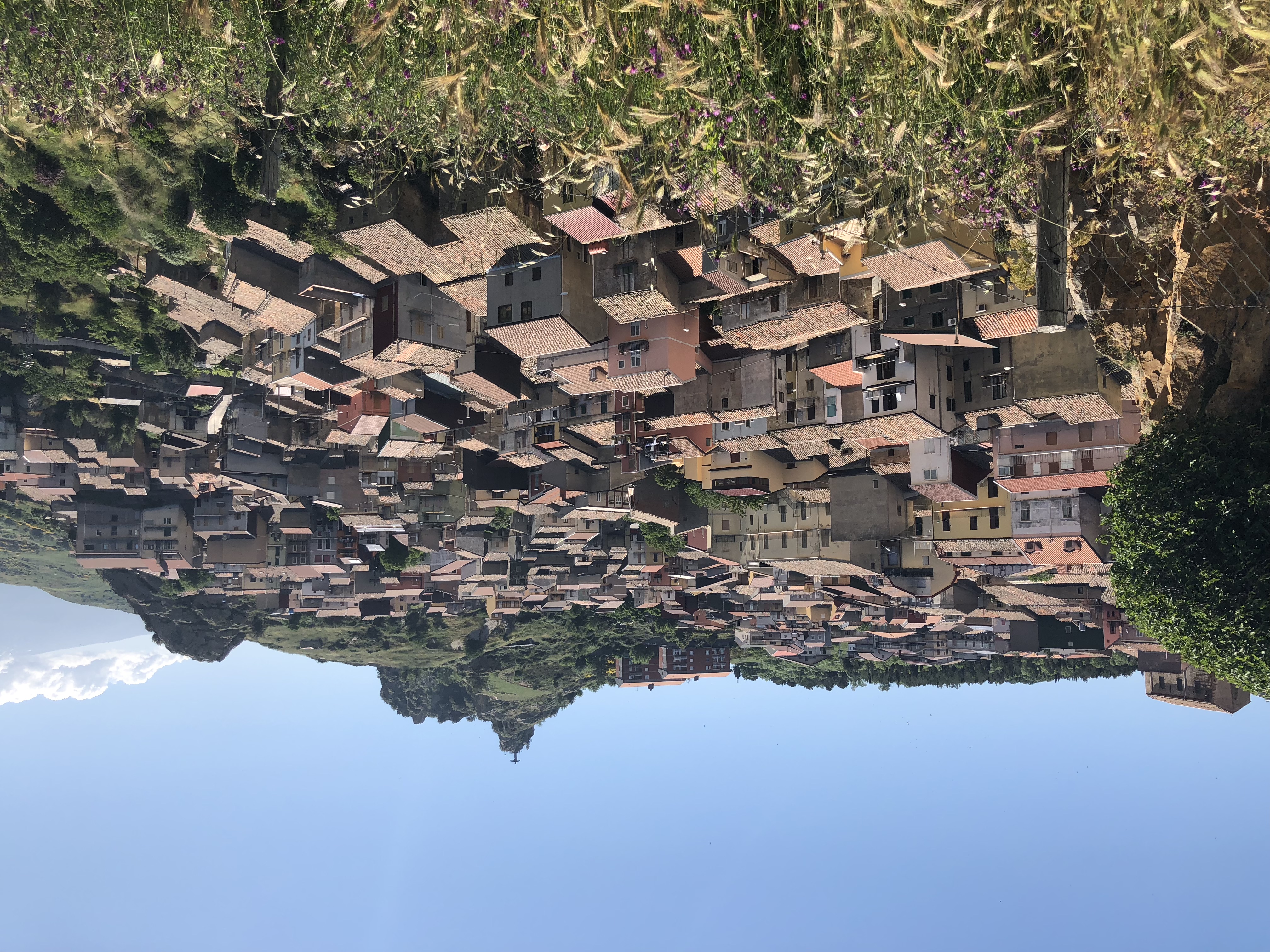

Cesarò è un comune della provincia di Messina situato a 1150 metri sul livello del mare, nel territorio del parco dei Nebrodi. Il suo nome deriva dall'arabo “Kaer”, luogo fortificato, poi cambiato in Kasròn e infine in Cesarò o anche dal greco “Kérasos” (ciliegia) o “Kirassos” (luogo ricco di edera). Dal XIX secolo si legge il termine caesarodum o caesarodis come risulta dallo stemma in cui compare l'iscrizione “Caesarodis Universitas”, e da altri documenti.Sono stati trovati anche resti di tombe preistoriche del periodo dei Siculi, ma non ci sono notizie certe sulla sua antichità. Le prime notizie certe risalgono al 1334 da un documento dal quale risulta che Federico II d'Aragona, re di Sicilia, la diede in feudo a Cristoforo Romano Colonna e alla sua famiglia, cui appartenne fino al 1643.
Durante il periodo della dominazione romana e poi sotto quella dei barbari e dei Greco-Bizantini, Cesarò forse faceva parte del territorio di Troina, città dalla quale dista poco più di 20 km.
Il primo insediamento della città fu abitato da cristiani bizantini-greci che fondarono il quartiere di Santa Caterina, dove costruirono la fortezza di Giannina per difendersi dagli invasori.
Durante il periodo arabo, l'emiro iniziò una spedizione punitiva contro i briganti che infestavano la zona, facendoli impiccare e da ciò questo luogo porta il nome di “Portella Impisi”. Successivamente, in epoca normanna, il signore del tempo, Arisgoto da Pozzuoli, aggiunse alla rocca altri agglomerati che costituivano i quartieri “Stallazzi” e “Salice”; del primo rimasero per qualche tempo solo i gradini, dell'altro rimane la via principale chiamata Via Umberto.
A quei quartieri iniziali nel XIV secolo fu unito il distretto “Ramusa”, dove c'è una fonte d'acqua.
La famiglia Pozzuoli mantenne il potere fino al 1333.
Nel 1768 fu istituito un” Monte Frumentario " per il sostentamento dei poveri.
Tra i palazzi di particolare pregio e dimensione spicca il” Palazzo Zito " che nel 2009, dopo un restauro è accessibile al pubblico come casa-museo e che al suo interno, conserva ancora affreschi, arredi e pavimenti originali.
Oltre a questo, a Cesarò si trovano anche Palazzo Colonna Romano e Palazzo Brolo.
Tra i monumenti religiosi: la cattedrale di Maria SS. Annunziata, la chiesa di San Calogero, la chiesa di Santa Caterina, la chiesa di Santa Maria delle Grazie e la chiesa di Sant'Antonio.
Nei dintorni, di interesse turistico dal punto di vista naturalistico-escursionistico, si trovano il Monte Soro e i laghi di Biviere e Maulazzo.
Tra le feste che attirano i turisti: la festa di San Calogero, la festa del Maiale Nero dei Nebrodi e del fungo Porcino e anche il Palio di Cesarò.
(English)
Cesarò is a town in the province of Messina located 1150 meters above sea level, in the territory of the park of Nebrodi. Its name derives from the Arabic “Kaer”, a fortified place, then changed to Kasròn and finally to Cesarò or even from the greek “Kérasos” (cherry) or “Kirassos” (a place rich in ivy). From the nineteenth century we read the term caesarodum or caesarodis as is detected by the coat of arms in which the inscription “Caesarodis Universitas” appears, and from other documents.Remains of prehistoric tombs of the period of the Siculis have also been found, but there is no definite informations about its antiquity. The first definite informations dates back to 1334 from a document which shows that Federico II of Aragon, king of Sicily, gave it as a feudo to Cristoforo Romano Colonna and his family, to whom it belonged until 1643.
During the period of the Roman domination and then under the one of the barbarians and the Greeks-Byzantines, Cesarò perhaps was part of the territory of Troina, town from which is just over 20 km far.
The first settlement of the town was inhabited by Byzantine-Greeks christians who founded the neighborhood of St. Catherine, where they built the fortress of Giannina in order to defend themselves from the invaders.
During the Arab period, the emir began a punitive expedition against the brigands who infested the area, making them hang and from that this place brings the name of “Portella Impisi”. Later, in the Norman period, the lord of the time, Arisgoto da Pozzuoli, added to the fortress other agglomerations that constituted the neighborhoods “Stallazzi” and “Salice”; the first remained for some time only the steps, of the other remains the main street called Umberto Street.
To those initial quarters in the fourteenth century the district “Ramusa”, where there is a water source, was joined. The Pozzuoli family held the power until 1333.
In 1768 a “Monte Frumentario” was established for the sustenance of the poor.
Among the palaces of particular value and size stands out the “Palazzo Zito” that in 2009, after a restoration is accessible to the public as a house-museum and that in its interior, still retains frescoes, furnishings and original floors.
Besides to this, in Cesarò there are also the Roman Colonna Palace and the Brolo Palace.
Among the religious monuments: the cathedral of Maria SS. Annunziata, the church of St. Calogero, the church of St. Caterina, the church of Santa Maria delle Grazie and the church of St Anthony.
In the surrounding area, touristically interesting from a naturalistic-excursion point of view, there is Monte Soro and the lakes of Biviere and Maulazzo.
Among the festivals that attract tourists: the feast of St. Calogero, the festival of the Black Pig of the Nebrodi and Porcino mushroom and also the Palio of Cesarò.